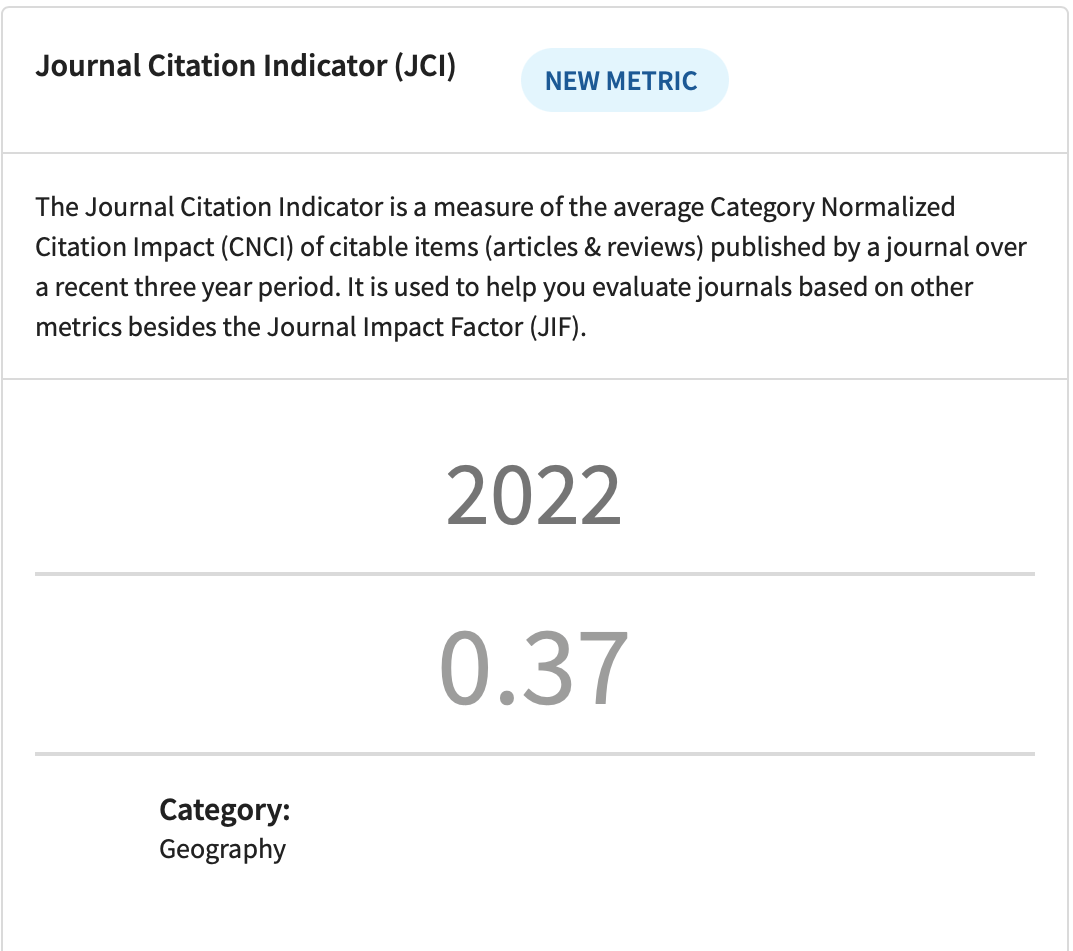FOREST FIRES IN PORTUGAL — THE CONNECTION WITH THE ATLANTIC MULTIDECADAL OSCILLATION (AMO)
DOI:
https://doi.org/10.2298/IJGI1701027MKeywords:
forest fires, burned area, AMO, Portugal,Abstract
The data on forest fires in Portugal in the period 1980–2015 were used in the research: the annual number of forest fires, the annual burned area and the average burned area per fire. Increasing trend of the annual number of forest fires (statistically significant at p≤0.01), non-significant increasing trend of the annual burned area and decreasing trend of the average burned area per fire (statistically significant at p≤0.01) were recorded. Portugal is the most endangered country by forest fires in comparison with the other European countries. During the research period, fires in Portugal covered 23.6% of the total burned area in five the most affected European countries (Portugal, Spain, France, Italy and Greece). In the research of the connection between forest fires and the Atlantic Multidecadal Oscillation (AMO) Pearson correlation coefficient (R) was used. Monthly, seasonal and annual values of the AMO index were used in calculations. All R values recorded for the annual number of fires were positive and statistically significant at p≤0.01. The highest values were recorded for August (0.543) and for summer (0.525). With the annual burned area all R values were also positive and the highest one on the seasonal level was for summer (0.359). With the average burned area per fire all R values were negative (−0.428 was recorded for winter). The results of the research could be applied in the fire danger forecast for periods of several months. Other climate indices should also be considered in future research.
Article metrics
References
FAO (2015). Global Forest Resources Assessment 2015. Desk reference. Rome: Food and Agriculture Organization of the United Nations. ISBN 978-92-5-108826-5. http://www.fao.org/3/a-i4808e.pdf
Gomes, J. F. P. (2006). Forest fires in Portugal: how they happen and why they happen. International Journal of Environmental Studies, 63(2), 109–119. DOI: 10.1080/00207230500435304
Gomes, J. F. P., Radovanovic, M. (2008). Solar activity as a possible cause of large forest fires — а case study: Analysis of the Portuguese forest fires. Science of the total environment, 394(1), 197–205. DOI: 10.1016/j.scitotenv.2008.01.040, ISSN 0048–9697
Milenković, M., Barović, G. (2015). Atlantic Multidecadal Oscillation (AMO) and the wildfires in the United States of America. Proceedings: 4th Congress of serbian Geographers, book 1, 137–142 (in Serbian).
Milenković, M., Dedić, A., & Doljak, D. (2016). Forest fires threaten biomass production in the EU: experiences from Portugal, Spain and France impose preventive measures for Serbia. Proceedings: The Fourth International Conference on Renewable Electrical Power Sources, Belgrade (in Serbian).
Milenković, M., Ducić, V., Burić, D., & Lazić, B. (2016). The Atlantic Multidecadal Oscillation (AMO) and the forest fires in France in the period 1980–2014. Journal of the Geographical Institute “Jovan Cvijić” SASA, 66(1), 35–44. DOI: 10.2298/IJGI1601035M
Radovanović, M. M., Pavlović, T. M., Stanojević, G. B., Milanović, M. M., Pavlović, M. A., & Radivojević, A. R. (2015). The influence of solar activities on occurrence of the forest fires in South Europe. Thermal Science, 9(2), 435–446. DOI: 10.2298/TSCI130930036R
Radovanović, M. M., Vyklyuk, Y., Milenković, M., Vuković, D. B., & Matsiuk, N. (2015). Application of adaptive neuro-fuzzy interference system models for prediction of forest fires in the USA on the basis of solar activity. Thermal Science, 19(5), 1649–1661. DOI: 10.2298/TSCI150210093R
San-Miguel-Ayanz, J., Durrant, T., Boca, R., Libertà, G., Boccacci, F., Di Leo, M., López Pérez, J., & Schulte, E. (2016). Forest Fires in Europe, Middle East and North Africa 2015; EUR 28158 EN; doi:10.2788/914; http://forest.jrc.ec.europa.eu/effis/reports/annual-fire-reports/
Schoennagel, T., Veblen, T. T., Kulakowski, D., & Holz, A. (2007). Multidecadal climate variability and climate interactions affect subalpine fire occurrence, western Colorado (USA). Ecology, 88(11), 2891–2902. http://www.jstor.org/stable/27651447
Sibold, J. S., & Veblen, T. T. (2006). Relationships of subalpine forest fires in the Colorado Front Range with interannual and multidecadal-scale climatic variation. Journal of Biogeography, 33(5), 833–842. DOI: 10.1111/j.1365-2699.2006.01456.x
Skinner, W. R., Shabbar, A., Flannigan, M. D., & Logan, K. (2006). Large forest fires in Canada and the relationship to global sea surface temperatures. Journal of Geophysical Research: Atmospheres, 111, D14106. DOI: 10.1029/2005JD006738
Downloads
Published
How to Cite
Issue
Section
License

This work is licensed under a Creative Commons Attribution-NonCommercial-NoDerivatives 4.0 International License.











